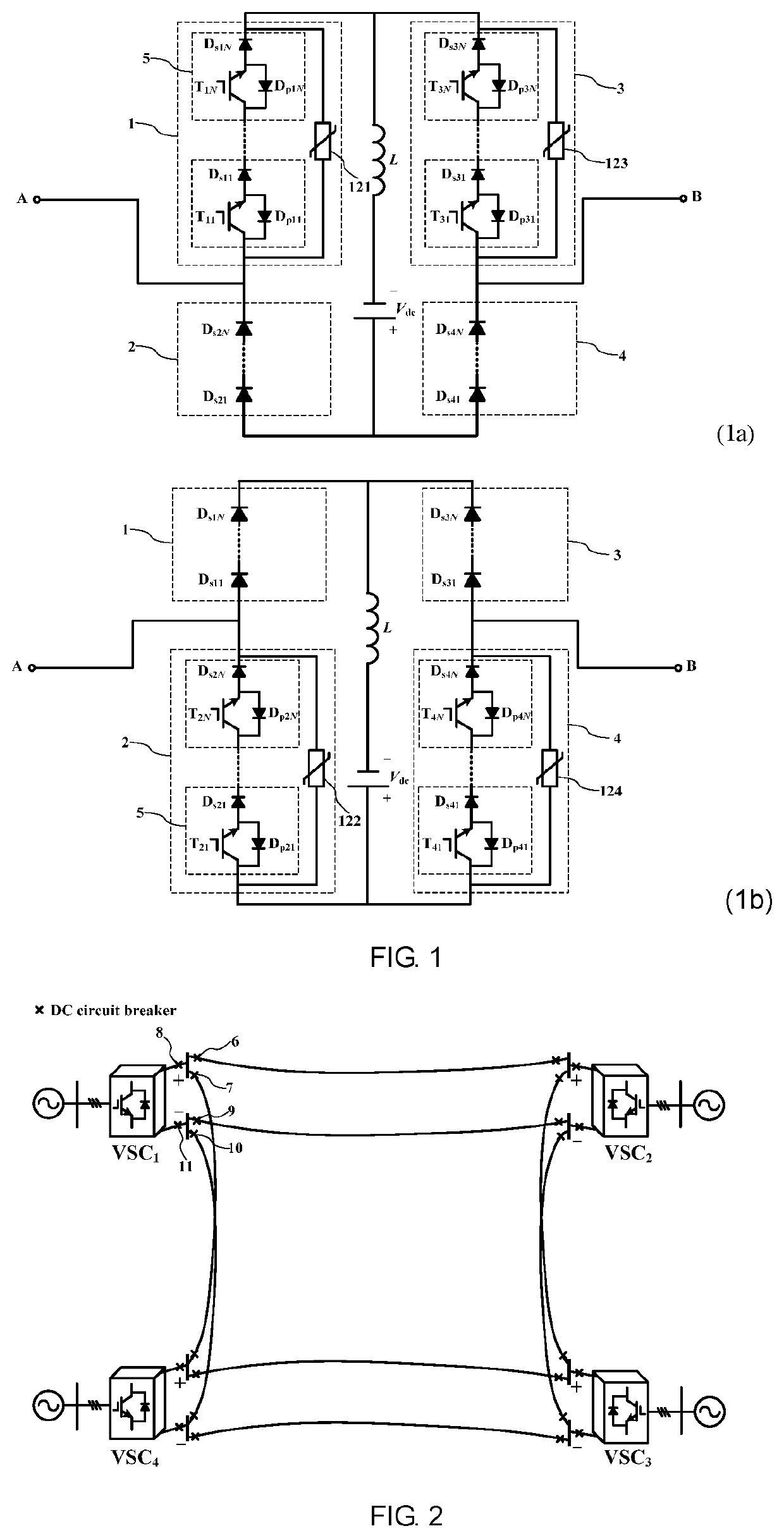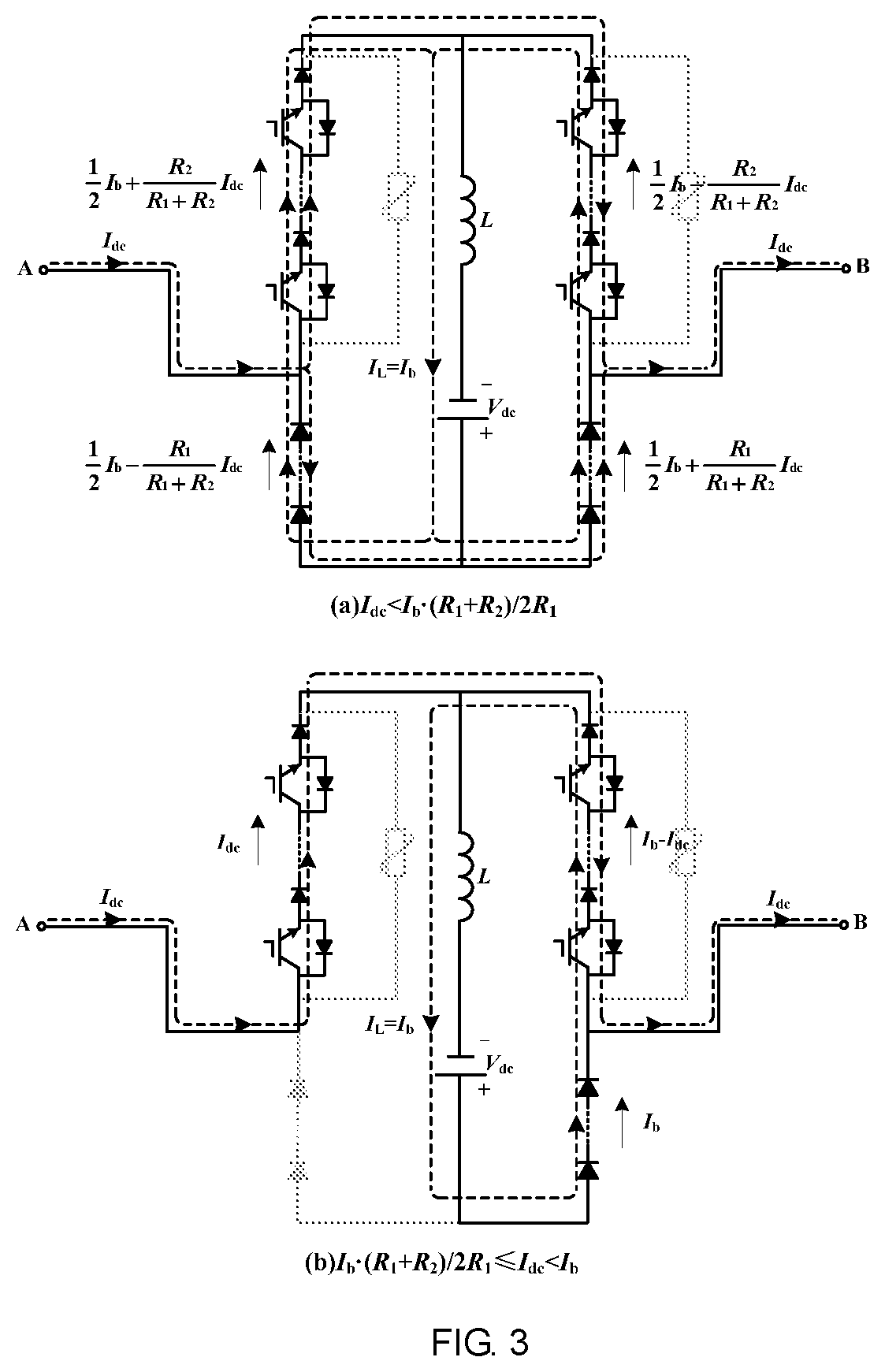Novel DC solid-state circuit breaker with self-adapt current limiting capability and the control method thereof
a solid-state circuit and self-adapting technology, applied in the direction of emergency protective circuit arrangements, emergency protection arrangements for limiting excess voltage/current, etc., can solve the problems of difficult arc extinguishing of dc faults, uncontrolled rectification methods, and endangering system operation security, so as to limit the dc fault current and propagate quickly
- Summary
- Abstract
- Description
- Claims
- Application Information
AI Technical Summary
Benefits of technology
Problems solved by technology
Method used
Image
Examples
first embodiment
[0029]As shown in FIG. 1, FIG. 1a) shows the topology of the DC SSCB with self-adapt fault current limiting capability according to the present invention. The topology includes a H-bridge circuit consisting of the first bridge arm 1, the second bridge arm 2, the third bridge arm 3 and the fourth bridge arm 4, wherein the first bridge arm 1 and the second bridge arm 2 are connected in series, the third bridge arm 3 and the fourth bridge arm 4 are connected in series, and the series branch formed by the first bridge arm 1 and the second bridge arm 2 is connected in parallel to the series branch formed by the third bridge arm 3 and the fourth bridge arm 4. The specific topology of the bridge arms will be described below in detail.
[0030]The first bridge arm 1 and the third bridge arm 3 are named as the unidirectional breakable bridge arms, and each of them is formed by connecting N unidirectional breakable modules 5 in series and then connecting them to the arrester (121 or 123) in para...
second embodiment
[0031]As shown in FIG. 1, FIG. 1b) shows the topology of the DC SSCB with self-adapt fault current limiting capability according to the present invention. The topology includes a H-bridge circuit consisting of the first bridge arm 1, the second bridge arm 2, the third bridge arm 3 and the fourth bridge arm 4, wherein the first bridge arm 1 and the second bridge arm 2 are connected in series, the third bridge arm 3 and the fourth bridge arm 4 are connected in series, and the series branch formed by the first bridge arm 1 and the second bridge arm 2 is connected in parallel to the series branch formed by the third bridge arm 3 and the fourth bridge arm 4. The specific topology of the bridge arms will be described below in detail.
[0032]Each of the first bridge arm 1 and the third bridge arm 3 is formed by connecting N diodes (Ds11-Ds1N and Ds31-Ds3N) in series. Each of the second bridge arm 2 and the fourth bridge arm 4 is formed by connecting N unidirectional breakable modules 5 in se...
PUM
 Login to View More
Login to View More Abstract
Description
Claims
Application Information
 Login to View More
Login to View More - R&D
- Intellectual Property
- Life Sciences
- Materials
- Tech Scout
- Unparalleled Data Quality
- Higher Quality Content
- 60% Fewer Hallucinations
Browse by: Latest US Patents, China's latest patents, Technical Efficacy Thesaurus, Application Domain, Technology Topic, Popular Technical Reports.
© 2025 PatSnap. All rights reserved.Legal|Privacy policy|Modern Slavery Act Transparency Statement|Sitemap|About US| Contact US: help@patsnap.com



